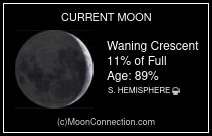| Ouija: How Does It Work? | |
Your fingertips lightly touch the edge of the planchette. Your friend does the same on the opposite side. You consciously move the planchette in circles around the board to get it "warmed up." Then you ask your question. No response at first. Then slowly the planchette begins to move, seemingly on its own - at least you're not trying to move it. Sliding from one letter to the next, the planchette spells out its answer. And it seems to fit. More questions are asked, and with increasing speed the Ouija provides its responses, letter by letter. Seemingly with significance. Sometimes with dark significance.
What's behind the Ouija? How does it work? Is it, as the manufacturer suggests, a harmless game? Or is something more sinister involved? In a recent poll of readers conducted at this site, 65 percent believed the Ouija to be a dangerous tool. While a majority of respondents (41 percent) believed that the board was controlled by the users' subconscious, 37 percent believed it was controlled by spirits, and 14 percent feared that it was under the influence of demonic spirits.
The Ouija board as we know it dates back to the late 1800s when at the height of the spiritualist movement it was a popular parlor game. Over the years, many manufacturers have marketed Ouijas and other "talking boards." At The Museum of Talking Boards - one of the best websites about the Ouija - you can see and read about the many incarnations of the board. Currently, apart from the familiar Ouija board marketed by Parker Brothers (now part of Hasbro), there are about eight other styles of talking boards that all work in pretty much the same way - with a pair of hands resting on a planchette that points to words or spells out answers to questions asked.














0 comments